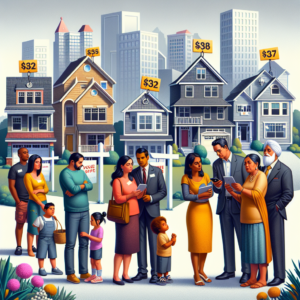
Zoning laws serve as the backbone of urban planning, dictating how land can be used and developed within a community. These regulations are designed to promote organized growth, protect property values, and enhance the quality of life for residents. However, recent amendments to zoning laws across various municipalities have sparked intense debate, revealing a complex web of implications that extend far beyond mere land use. This article delves into the recent changes in zoning laws, exploring their economic, social, and environmental ramifications while providing a glimpse into the future of community planning.
Understanding Zoning Laws: A Foundation for Community Development and Planning
Zoning laws are legal frameworks established by local governments to regulate land use and development. They categorize land into different zones—residential, commercial, industrial, and agricultural—each with specific rules governing what can be built and how properties can be utilized. These laws aim to ensure that communities develop in a coherent manner, balancing the needs of various stakeholders, including residents, businesses, and environmental advocates. By controlling density, height, and the types of activities permitted in each zone, zoning laws play a crucial role in shaping the character of neighborhoods, influencing everything from traffic patterns to public services, and ultimately determining the livability of urban spaces.
Recent Changes in Zoning Laws: An Overview of Key Amendments and Their Rationale
In recent years, many cities have undertaken significant revisions to their zoning laws, often in response to pressing challenges such as housing shortages, economic disparities, and climate change. Key amendments include the relaxation of restrictions on multi-family housing, the introduction of mixed-use developments, and the promotion of accessory dwelling units (ADUs). These changes aim to address the growing demand for affordable housing, stimulate local economies, and encourage sustainable development practices. Proponents argue that such reforms are necessary to adapt to evolving demographic trends and to create more inclusive communities, while critics caution that rapid changes may lead to unintended consequences, including gentrification and the displacement of long-standing residents.
The Economic Implications of Zoning Law Changes on Local Businesses and Property Values
The economic impact of zoning law changes is profound, influencing local businesses and property values in various ways. By allowing for increased density and mixed-use developments, municipalities can attract new businesses and stimulate economic activity. For instance, areas that permit commercial enterprises alongside residential units often see a surge in foot traffic, benefiting local retailers and service providers. However, the flip side of this economic boon can be rising property values and rents, which may price out existing residents and small businesses. As neighborhoods undergo transformation, the balance between fostering economic growth and maintaining affordability becomes a critical concern for policymakers and community leaders alike.
Social Consequences: How Zoning Law Changes Affect Community Dynamics and Cohesion
Zoning law changes can significantly alter the social fabric of communities, impacting everything from neighborhood cohesion to demographic diversity. The introduction of multi-family housing and mixed-use developments can promote inclusivity by attracting a broader range of residents, including families, young professionals, and retirees. However, these changes can also lead to tensions among existing residents who may feel threatened by an influx of newcomers or by the rapid transformation of their neighborhoods. The potential for gentrification raises concerns about the displacement of long-time residents and the erosion of community identity. As communities grapple with these social dynamics, fostering dialogue and collaboration among stakeholders becomes essential to ensure that zoning reforms benefit all residents.
Environmental Considerations: Assessing the Impact of Zoning Changes on Urban Sustainability
Environmental sustainability is increasingly becoming a focal point in zoning law revisions, with many municipalities seeking to promote greener practices through their regulations. Changes that encourage higher density development, for instance, can reduce urban sprawl and minimize the ecological footprint of cities. Additionally, zoning laws that prioritize green spaces, promote public transportation, and integrate sustainable building practices contribute to healthier urban environments. However, the environmental benefits of zoning changes must be weighed against potential drawbacks, such as increased traffic congestion and strain on local infrastructure. As cities strive to balance development with sustainability, the role of zoning laws in shaping resilient urban landscapes becomes ever more critical.
Future Outlook: Anticipating Further Zoning Law Revisions and Their Potential Effects
Looking ahead, the landscape of zoning laws is likely to continue evolving in response to emerging challenges and societal needs. As cities confront issues such as climate change, housing crises, and economic inequality, further revisions to zoning regulations will be essential. Anticipated changes may include more robust incentives for affordable housing development, enhanced provisions for sustainable building practices, and greater flexibility in land use to accommodate innovative solutions. However, the path forward will require careful consideration of the potential impacts on existing communities, as well as ongoing engagement with residents and stakeholders. The future of zoning laws will ultimately hinge on the ability of policymakers to strike a balance between growth, equity, and sustainability.
In conclusion, the recent changes to zoning laws have unveiled a complex array of implications for communities, touching on economic, social, and environmental dimensions. While these amendments aim to address pressing urban challenges, they also raise critical questions about the future of community dynamics and the sustainability of urban development. As municipalities navigate this evolving landscape, the importance of inclusive dialogue and thoughtful planning cannot be overstated. The ongoing discourse surrounding zoning laws will undoubtedly shape the character and livability of our communities for generations to come.




























